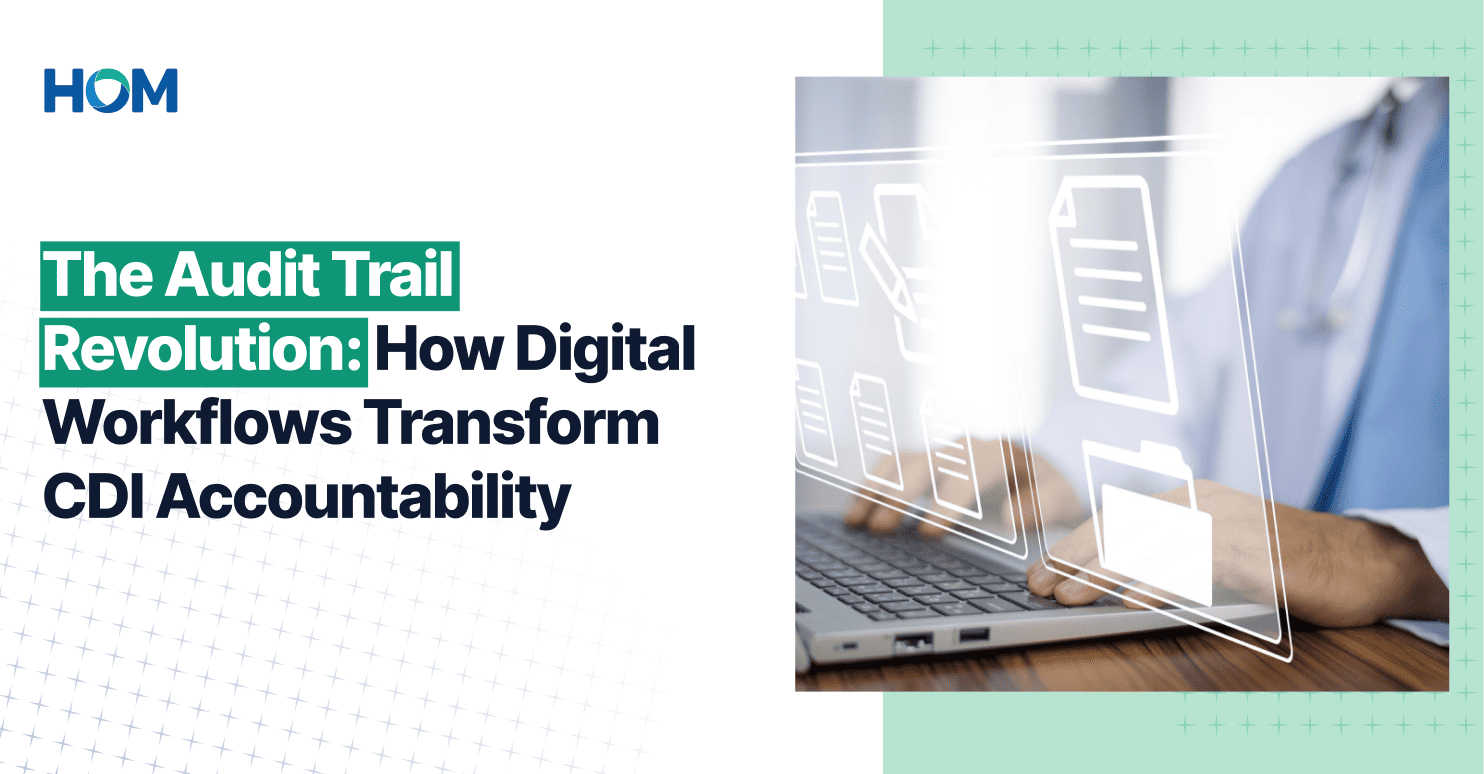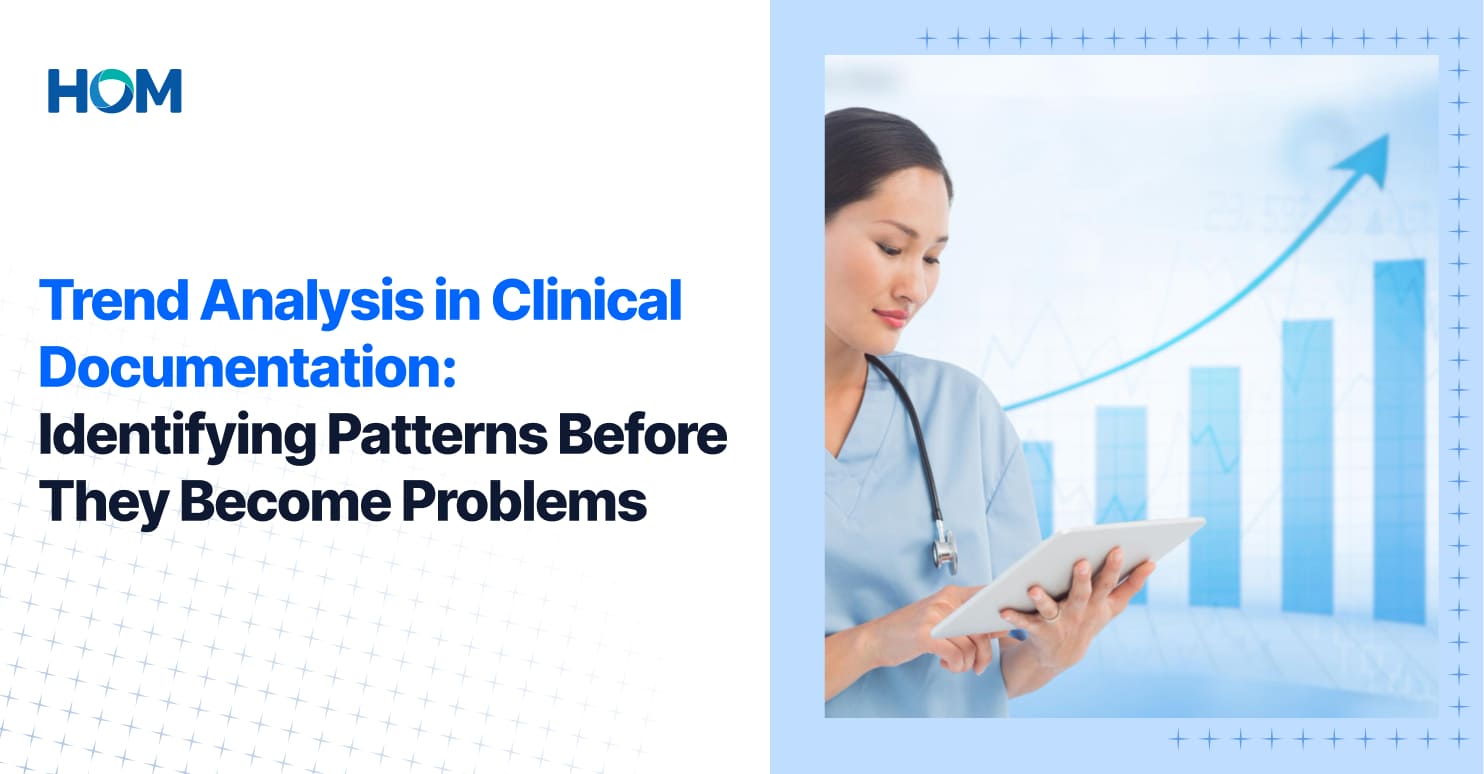
Accountability in Clinical Documentation Improvement (CDI) isn't just procedural—it's the foundation for accurate, compliant, and defensible records.
When accountability falters, documentation gaps emerge and eventually result in costly repercussions. CMS reported more than $31 billion in improper payments in 2024, primarily stemming from insufficient documentation and weak oversight.
Yet, many CDI teams continue to rely on spreadsheets, disjointed emails, or buried EHR notes to track queries and medical coding changes. This fragmented oversight creates critical vulnerabilities:
- Lost transparency: Without clear logs, it was hard to determine who initiated a query or when a change occurred.
- Blame over clarity: Providers and coders often disagreed about retrospective edits, with no way to verify intent.
- Compliance risks: Auditors had little patience for reconstructed timelines, exposing healthcare practices to denials and penalties.
A recent survey shows 41% of providers face denial rates of 10% or higher, usually due to documentation, coding, or verification errors. Digital workflows change this narrative. By embedding audit trails directly into CDI processes, every action can be logged, timestamped, and linked to source documentation. This turns accountability from a manual burden into an automated safeguard.
How Digital Audit Trails Transform CDI Accountability
Digital audit trails are chronological records of CDI activity. Digital workflows expand this capability notably, embedding accountability into every step of the documentation process–from query creation and code validation to provider engagement and system access. The transformation lies not just in recording activity but in how audit trails reshape CDI operations.
1. Real-time transparency in queries
Digital workflows automatically capture every query—when it was drafted, sent, and answered, along with the rationale behind it. Instead of depending on siloed emails, CDI teams can monitor query lifecycles directly within the workflow. Specialists know when a provider has received, responded to, or ignored a query.
HOM’s CDI programs embed this transparency, allowing provider champions in each specialty to be held accountable without disrupting workflows.
2. Version control for documentation integrity
When coders adjust or validate a code, the system records who made the change, which guideline was referenced, and why. One of the biggest risks in audits is retrospective documentation edits. Digital audit trails record every change—who made it, when, and why—eliminating disputes about whether specificity was added later.
This is particularly valuable for complex cases where accuracy drives reimbursement, such as heart failure or chronic kidney disease.
3. Automated compliance safeguards
Beyond code changes, digital workflows also track provider communications, clarifications, and education efforts, showing payers that documentation integrity is part of an ongoing process.
Modern CDI systems flag non-compliant or leading queries before they’re sent. At HOM, AI-assisted workflows integrate compliance checks in real time, ensuring MEAT (Monitor, Evaluate, Assess, Treat) criteria are consistently met.
The audit trail captures each action and compliance safeguard, making every decision traceable, verifiable, and defensible while reducing denials and audit risk.
4. Performance analytics as accountability tools
Audit trails also capture which users accessed which records, enabling HIPAA compliance and safeguarding sensitive data. But the value extends beyond security.
Audit logs double as datasets for performance improvement. Metrics such as query turnaround time, physician response rates, and coding accuracy trends can be analyzed by specialty or provider.
HOM uses these analytics to tailor provider education and identify documentation bottlenecks, reinforcing accountability at both the team and organizational levels.
In each of these areas, human oversight remains indispensable. Digital workflows track and safeguard activity, but it’s CDI specialists and coders who interpret clinical nuance, ensure documentation reflects true acuity, and engage providers constructively.
Audit trails establish accountability; human expertise ensures the data is presented clinically and compliantly.
Role-Based Accountability in CDI
Audit trails aren't just a boon to compliance teams—they clarify accountability throughout the organization:
- Providers are accountable for timely and accurate responses to queries, with audit trails showing whether documentation reflects true patient acuity.
- CDI specialists are accountable for query appropriateness and adherence to compliance standards, with digital logs providing proof of clinical reasoning.
- Coders are accountable for applying medical coding guidelines consistently, with validation logs showing decision paths.
- CDI leaders and administrators are accountable for monitoring performance, ensuring compliance, and driving education, using analytics derived from audit trails.
By embedding accountability into defined roles, digital workflows eliminate ambiguity and turn documentation integrity into a shared, measurable responsibility.
Final Takeaway
The shift to digital workflows marks a turning point in CDI accountability. Audit trails provide transparency, defensibility, and efficiency.
As denials rise, compliance requirements tighten, and revenue pressure mounts, healthcare organizations can no longer rely on fragmented, manual systems.
HOM's CDI solutions integrate digital workflow with built-in audit trails, empowering hospitals to realize quantifiable outcomes:
- 98% medical coding accuracy to withstand payer scrutiny and protect revenue integrity
- RAF score improvements of up to 40%, ensuring accurate risk adjustment and defensible documentation
- 24-hour turnaround for chart review, proving that accountability and productivity can coexist
Request a free CDI audit and accountability readiness consultation to see how HOM can help your workflows become both transparent and high-performing.
Bring a change to your Healthcare Operations
A partnership with HOM gives you an inherent:
Connect with our experts for a quick analysis and possibilities.

















